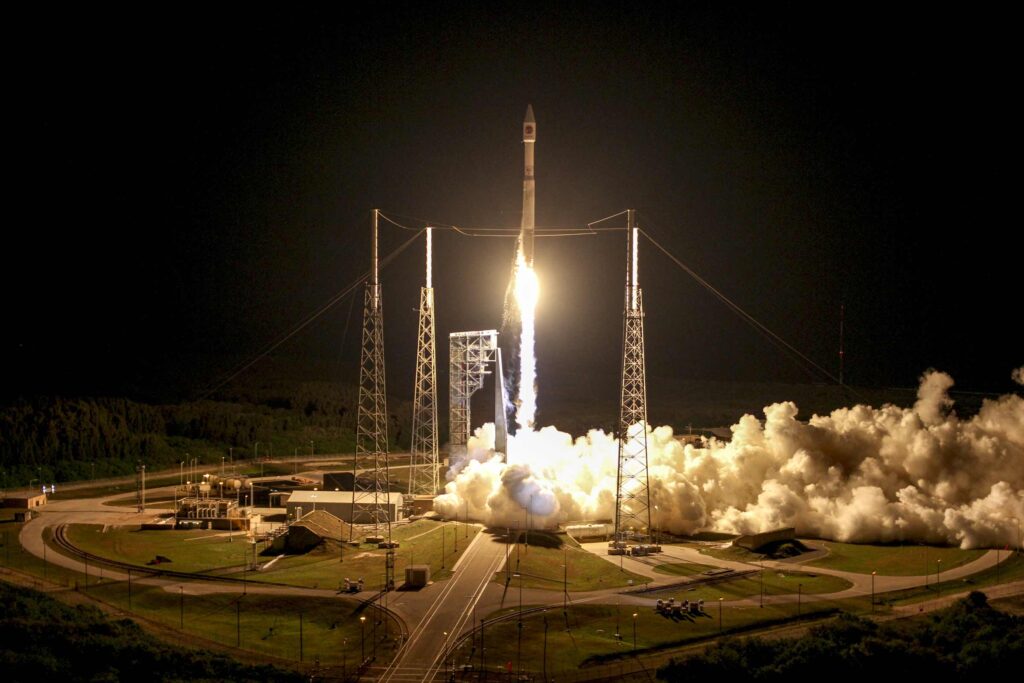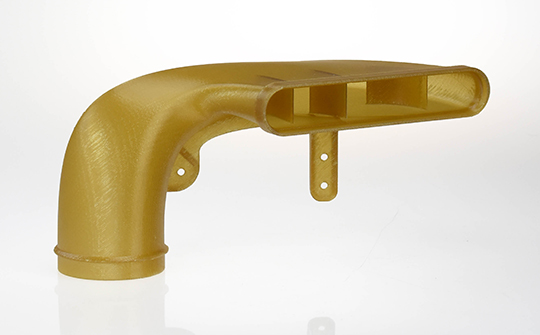Out of all the possible industries that are deploying more 3D printers, aerospace is probably the most exciting. By reducing the weight of aircraft components, by iterating more, by integrating components and reducing part count and by making parts others can not, we can have a real impact on aerospace. From rocketry to commercial aviation, we’re seeing new applications grow across the board with OEMs and Tier 1 through 3 investing in qualifying parts and moving carefully into production. Stratasys has had a long history in making polymer aviation components, mainly for military applications. We interviewed Stratasys’ Vice President for the Aerospace Business Segment, Scott Sevcik, on what was happening in 3D printing for aerospace. Sevcik is an aerospace engineer who spent eight years at Lockheed in various engineering, project management, and business roles. He next worked in trying to deflect asteroids from hitting the earth and later worked at UTC aerospace, managing teams of 100 or more engineers and significant budgets before becoming their Manager Program Management. He then worked on MRO with 3D printing before working in various roles at Stratasys. He now manages their Aerospace business.

Sevcik was very enthusiastic about the prospects of both polymer and metal 3D printed parts for aviation and aerospace. Although Stratasys has worked behind the scenes extensively for military customers they were now really for the first time able to share some more public business cases. He really enjoyed working with Boom on their supersonic passenger plane initiative, for example. Sevcik connected with Boom over two and a half years previously. What started as a simple tooling engagement using Fortus systems evolved into much more.
“They were building up their factory” and “for the sake of speed started deploying 3D printing more extensively.”
He was happy that “very quickly it became a real partnership” and that he and his team were able to “work right there with them” and “dive in deep.” From the initial tooling, jigs and fixtures were also added to the project as was work on parts of Boom’s simulator aircraft. Now they’re looking at putting 3D printed parts on the actual model and later on the Boom aircraft. On the test vehicle alone there were “100’s of potential 3D printing applications, especially once the Boom team understood the technology comprehensively.”
Sevcik maintains that there is a “level of maturity with additive adequate for prototyping, tooling, and some parts on aircraft” but that many customers “see the risk on additive and see it as an unproven technology.” Now the industry is entering a different phase though, increasingly “you’re dealing with procurement people, the conversation is about risk reduction.” Especially for some applications, the combination of “Ultem 9085 for aircraft interiors with the Fortus 900mc system has a high level of maturity.”
“9085 is very useful when looking at the heat release from larger aircraft interior parts”, if “you’re looking at a foot by a foot parts or parts with more volume then let’s say a fist the heat release requirements of those parts makes 9085 a good material to use.”
As examples of such parts Scott cites “luggage bins, bulkheads, panels.” The company also has examples of parts being flown in business aircraft including serial production parts. Commuter aircraft parts, speaker enclosures and many more applications exist.
“Around 15 years ago Stratasys first got into tooling for aerospace and later into cabin interior.”
Other applications can be wholly new but Sevcik likes it when customers “challenge us” or “form a strong team with us.”
Sevcik can’t tell us much about Stratasys’ defense business lines. What is known is that the company has a strong defense base working with Lockheed, NASA and others. In military aviation repeatability on the 900mc has been demonstrated by the University of Dayton Research Institute (UDRI) and certified for parts for the Air Force. This year and a half process has led to “C5 and C130 parts being made.” Additionally, the United Launch Alliance, Atlas rocket has seen 3D printed ducting.

One other thing the company has been able to talk about is its Antero PEKK material. Sevcik says it’s especially useful for aerospace “because PEEK crystalizes so quickly” but with “Antero you have much more control over crystallinity” which lets you “make large PEKK parts.” Antero is “best suited for applications outside the cabin while Ultem is ideal for in it.”
“Filled Ultem grades can also be brittle and in some cases, semicrystalline PEKK can give a better fit depending on what you’re looking for.”
Antero can also be ESD safe which can extend its usefulness. He’s buoyed by their materials partnership with Solvay and thinks that Strategic Materials Partnerships strike the right balance between “open and closed.” It will “help expand the portfolio of materials….and give customers access to fully tuned closed systems.” Additionally, the company is looking at unlocking aerospace for “TPU” and “working with DSM on materials for SLA.”

Along with machine sales Stratasys is approaching the aviation market through its Stratasys Direct Service business and the Harvest unit which is AS 9100 certified. Many OEMs have “15% in house fabrication and outsource the rest to partners” and for these cases, OEMs want multiple partners. This means that in some cases Stratasys will work with partners and in some technically compete with them. Stratays wants to “support OEMs and help its partners and customers move into production” in this way it “meets OEMs and customers where they want to be met.”
The post Interview with Scott Sevcik, VP Aerospace Stratasys, on 3D Printing for Aviation and Space appeared first on 3DPrint.com | The Voice of 3D Printing / Additive Manufacturing.

42 Replies to “Interview with Scott Sevcik, VP Aerospace Stratasys, on 3D Printing for Aviation and Space”
Comments are closed.